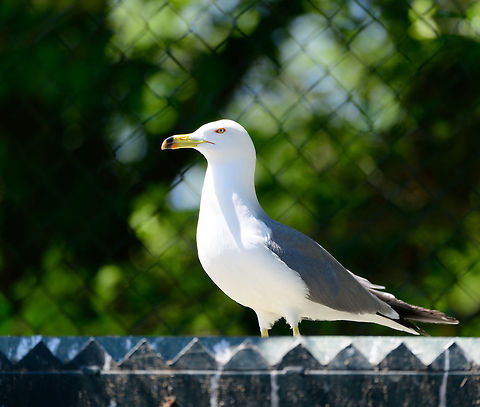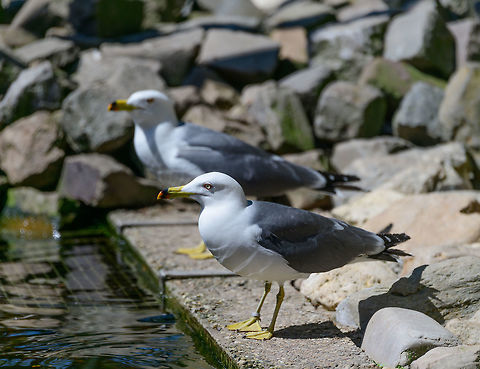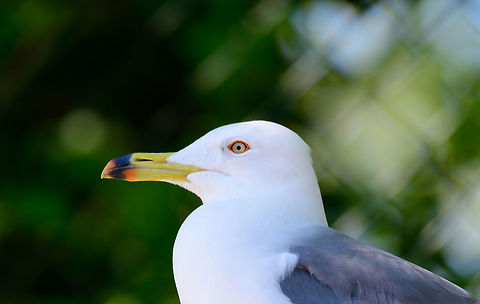
Appearance
The black-tailed gull is medium-sized , with a wingspan of 126–128 cm. It has yellow legs and a red and black spot at the end of the bill. Males and females have identical plumage and features, although males are larger in size than females. This gull takes four years to reach full adult plumage. As the name suggests, it has a black tail. The bird has a cat-like call, giving it its Japanese name — ''umineko'', "sea cat", and Korean name — ''gwaeng-yi'' gull, which means "cat" gull. In Hachinohe they are one of the 100 Soundscapes of Japan.
Distribution
The species is resident to coastlines of the East China Sea, Japan, Manchuria and the Kuril Islands. It is a vagrant to Alaska and North America and has been found in the Philippines.
Habitat
The species is resident to coastlines of the East China Sea, Japan, Manchuria and the Kuril Islands. It is a vagrant to Alaska and North America and has been found in the Philippines.The black-tailed gull feeds mainly on small fish, molluscs, crustaceans scraps and carrion.Researchers in National Institute of Fisheries have investigated in 2016 about the foods that black-tailed gulls eat. They collected excreta of black-tailed gulls and analyzed it. 70.9% of the excreta was digested, and it included fish , Crustacean , and land insects .
It often follows ships and commercial fishing fleets. It also steals food from other seabirds. It is a colonial nester, with colonies forming in mid-April. 2–3 eggs are laid by early June. Incubation lasts approximately 24 days.
References:
Some text fragments are auto parsed from Wikipedia.